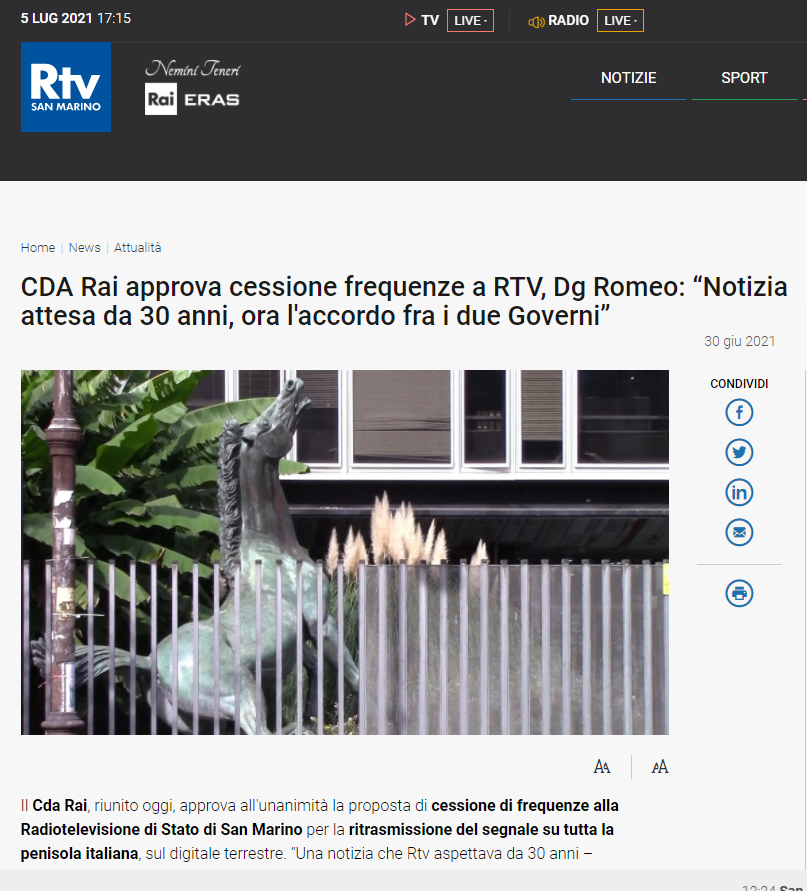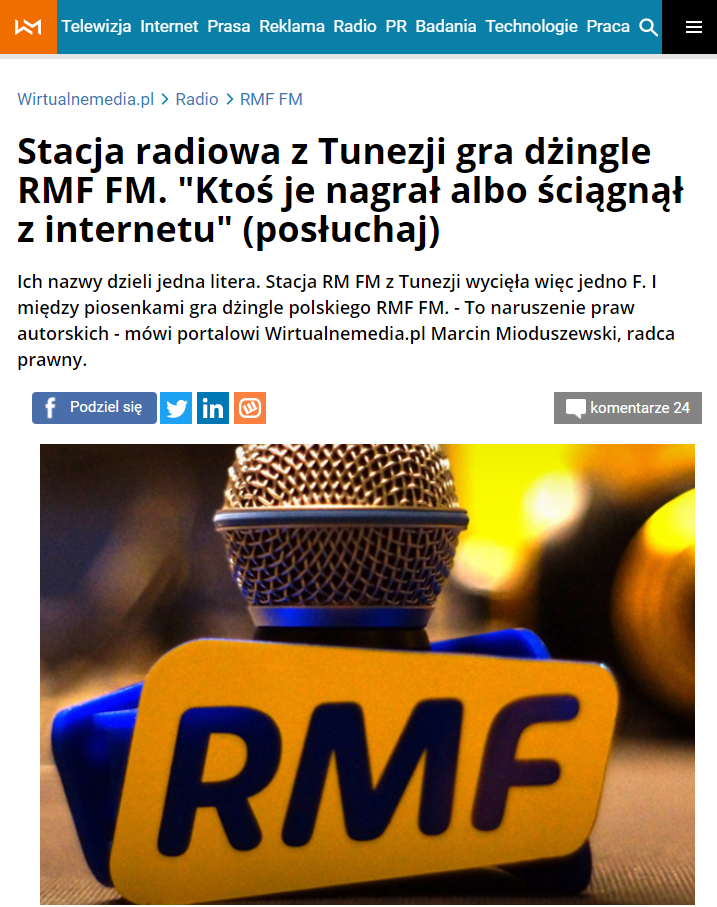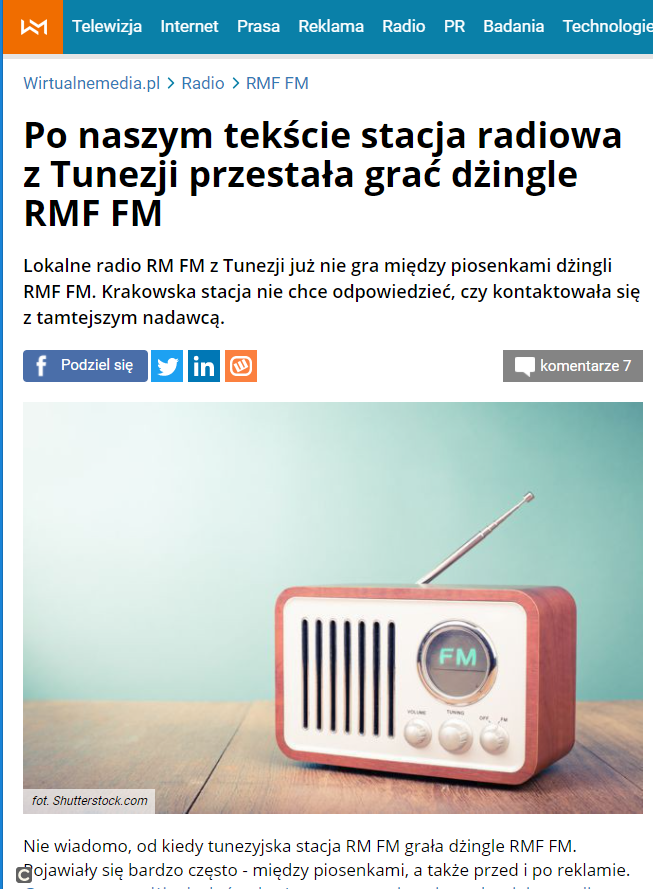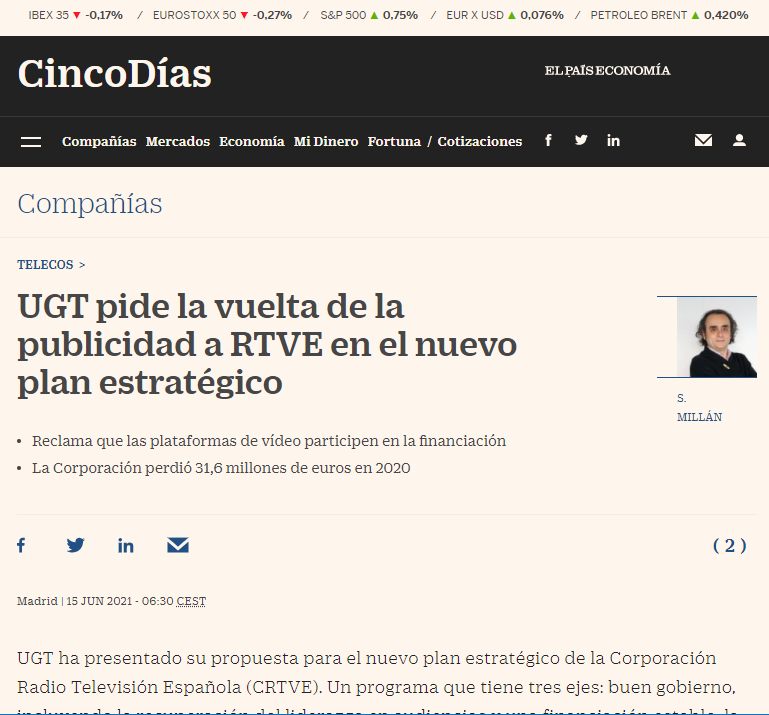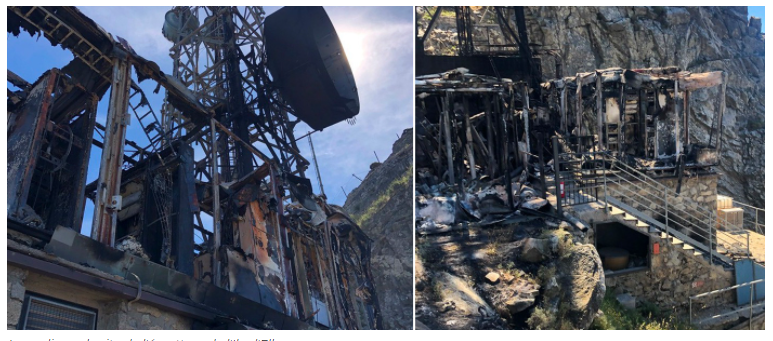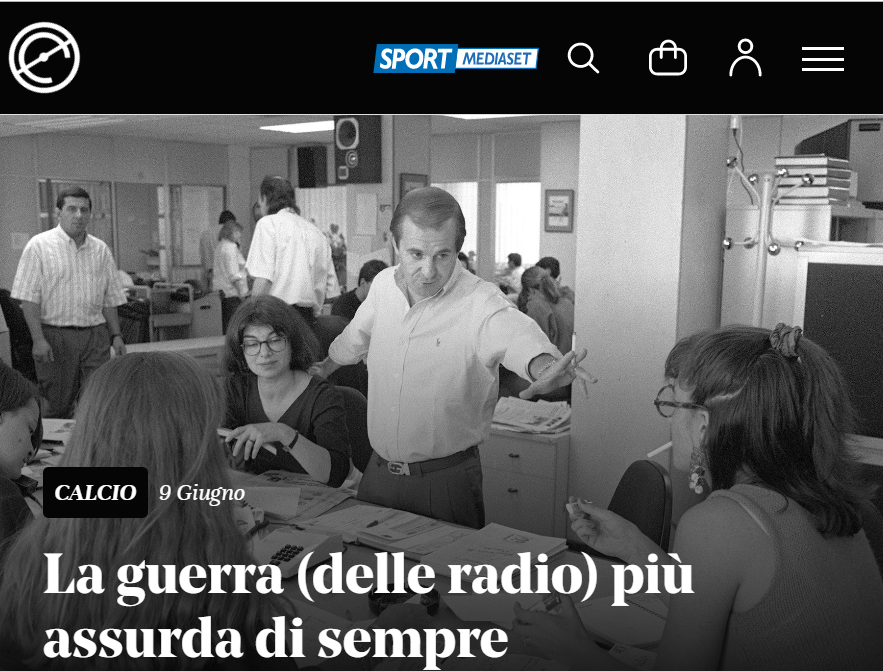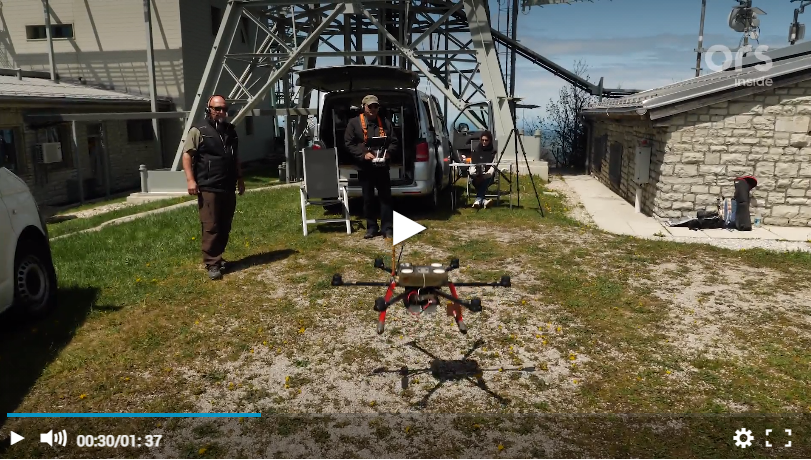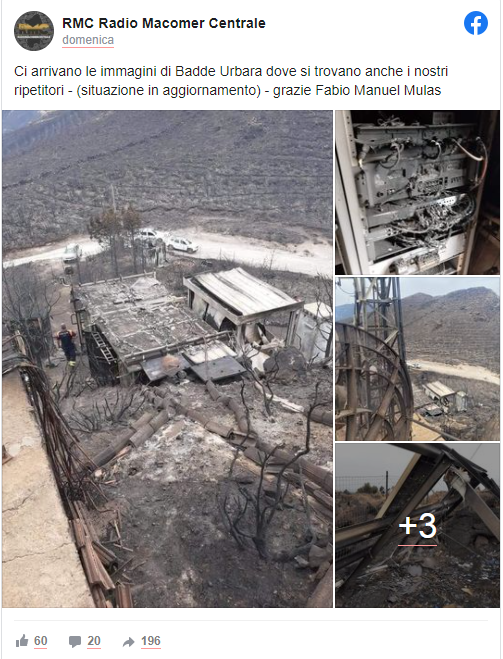
Source
A fire that broke out on Friday 23 July 2021 in the province of Oristano devastated Punta Badde Urbara, one of the island’s nerve centres, interrupting many radio and television signals broadcast in central and northern Sardinia. Audio and video links to important stations such as Monte Limbara, Monte Ortobene, Monte Oro and many secondary stations departed from the mountain in the Oristano area, with the result that many stations were mute and the TV signals were absent. The most difficult situation occurred on Saturday evening, when even the RAI signals disappeared for a few hours, while private broadcasters had to wait until Monday morning to return to normal.

Source
As the images from the site and satellite analysis show, the entire Badde Urbara broadcasting centre was surrounded by flames, with the buildings outside closest to the vegetation having the worst of it. The problems were probably also exacerbated by damage to the power lines, and the emergency generators held out until they ran out of fuel. For the radio stations, the interruptions lasted only a few minutes. On Sunday, Radio 105’s 99.30 MHz, Rai GR Parlamento’s 106.70 MHz, Radio Planargia’s 88.60 MHz and Radio Barbagia’s 99.90 MHz were occasionally without a signal.
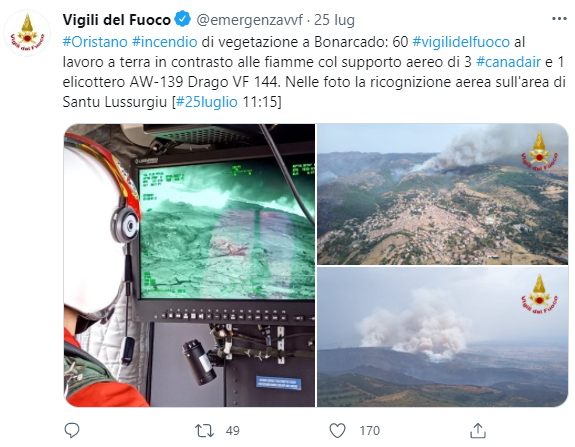
Source
The television situation is more critical, with more consistent interruptions: first to disappear Saturday evening, along with the mux1 of RAI, were the channels hosted on the multiplex Videolina. On Sunday, several broadcasters throughout central and northern Sardinia disappeared: among them Canale 9, Telesardegna, Paramount, Real Time, RTL 102.5, Giallo, K2, Frisbee, Boing Plus, Super!, Spike, DMax, HGTV, Motor Trend, Supertennis, Alma TV, VH1, Deejay TV and Radio Italia TV. The emergency lasted until Monday afternoon.
From our correspondent in Sardinia Cristian Puddu

